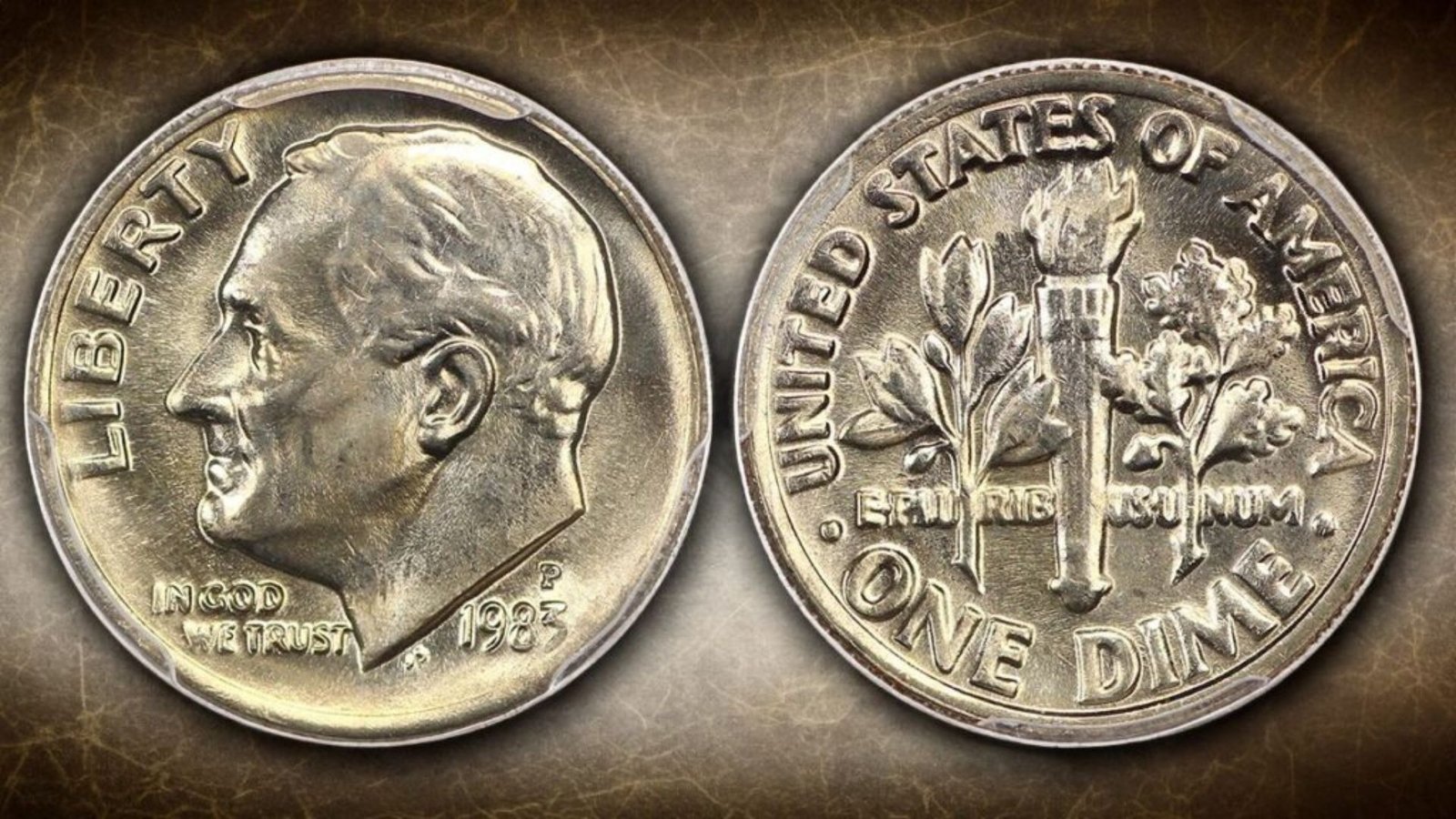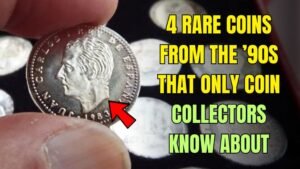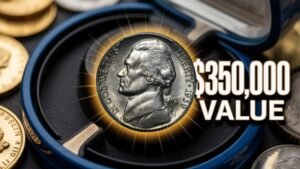If you’ve got a stash of old coins from the 1980s gathering dust, it might be time to take a closer look. The decade brought big changes to U.S. coin making, like switching metals to save costs and experimenting with new designs. But along the way, the U.S. Mint created some accidental gems—error coins, low-mintage pieces, and oddities that slipped through quality checks. These aren’t your everyday quarters or pennies; they’re collector favorites that can sell for hundreds or even tens of thousands of dollars today.
Why 1980s Coins Are Hot Collectibles in 2025
The 1980s were a turning point for American money. Facing rising copper prices, the Mint shifted pennies from nearly pure copper to a cheaper zinc core with a copper coating in 1982. This led to mix-ups in production, creating rare hybrids. Plus, errors like double strikes—where a coin gets hit twice by the die—happened more often during high-speed minting.
Low-run proofs and unmarked coins added to the excitement. Today, with fewer of these surviving in top shape, prices are soaring. Certified grades from experts like PCGS (Professional Coin Grading Service) can multiply a coin’s worth by five or ten times. Start your hunt in family albums, estate sales, or even vending machine change.
The Thrill of Finding Errors in Circulation
Error coins are like Easter eggs from the Mint—tiny mistakes that make big waves. Unlike planned rarities, these feel like winning the lottery. In the ’80s, faster machines meant more slip-ups, but most got melted down. The survivors? They’re prized for their stories and scarcity. Check dates carefully, as even a slight doubling can mean dollars.
1. 1980 Double-Struck Jefferson Nickel: Twice the Fun, Double the Value
Picture a nickel that’s been punched twice by the minting machine, leaving a ghostly second image. That’s the 1980 Double-Struck Jefferson Nickel, a quirky error from the Philadelphia Mint. Thomas Jefferson’s profile on the front and Monticello home on the back get that extra layer, making it stand out from the billions of normal nickels made that year.
Spotting the Double Strike
Look for faint outlines or shadows around the edges of letters, portraits, or designs. It’s subtle, so tilt the coin under light. Most errors are minor offsets, but even small ones catch eyes.
Value Breakdown and Recent Sales
In good circulated condition, these start at $50, but pristine uncirculated examples hit $20 or more—wait, no, up to $20 is low-end; actually, high-grade ones fetch far higher in auctions. One eBay sale in recent years went for over $500, showing how condition drives prices up.
Pro Tip for Hunters
These often hide in mixed coin rolls from banks. Avoid cleaning them, as it drops value. If you find one, snap clear photos and consult a local shop.
2. 1982-D Small Date Copper Penny: The Last of the Copper Kings
The 1982 penny switcheroo created legends. While most got the new zinc body, a handful of Denver-minted (D-marked) ones kept the old 95% copper makeup but used a smaller date punch meant for proofs. This “Small Date Copper Alloy” Lincoln Cent is a time capsule of the Mint’s chaotic transition.
How to Tell It Apart
Measure the date: The “2” in 1982 is shorter and more pointed than the large date version. Weigh it too—copper ones tip 3.11 grams, zinc at 2.5. A reddish hue confirms copper.
Historical Shift and Worth
This error ties to the Mint’s cost-cutting amid 1980s inflation. Values range from $100 for worn pieces to $18,800 for a gem one sold in 2016. Recent finds in 2019 suggest a few more are out there.
Where to Search
Raid grandma’s cookie jar or buy wheat penny rolls. Magnet test: Copper won’t stick; zinc will.
3. 1983 Double-Die Reverse Penny: Echoes on the Back Side
Only about 5,000 of these Lincoln Pennies exist, thanks to a die misalignment that doubled the reverse design. The Memorial building and phrases like “E PLURIBUS UNUM” appear ghosted, like a printing glitch.
Identification Clues
Examine the back: Letters and lines show parallel doubling, strongest on “ONE CENT.” It’s bolder than wear-induced fakes.
Rarity and Auction Buzz
Born from rushed production, this error became a ’80s icon. Circulated coins go for $500, but top grades reached $7,050 at a 2017 auction. Demand keeps climbing.
Collector Advice
Focus on Philadelphia-minted (no mark) 1983 pennies. Join online forums for verification help.
4. 1983 No Mint Mark Roosevelt Dime: The Proof Set Phantom
Proof coins are shiny collectibles struck for quality, not spending. But this 1983 Roosevelt Dime forgot its San Francisco “S” mark, making it a ghost in the machine. From special sets, only around 1,000 survive.
Key Spotting Features
Mirror-like fields and frosted devices scream proof. No “S” below the torch on the reverse? Jackpot. Avoid circulated lookalikes.
Backstory and Pricing
Part of the Mint’s proof program for hobbyists, low survival amps rarity. Values start at $300 for average, soaring to $2,000+ for perfect ones. No big auction noted, but steady sales.
Hunting Strategy
Hunt estate sales for old proof sets. Grade it professionally to unlock true worth.
5. 1984 Double-Die Obverse Lincoln Penny: Lincoln’s Double Take
This one’s all about the front: Abraham Lincoln’s face, ears, and bowtie get a doubled vibe from a shifted die. The 1984 Philadelphia Mint run produced few, turning pennies into portraits of error artistry.
Easy Ways to Check
Zoom on the motto “IN GOD WE TRUST”—letters split slightly. Doubling on the beard is a giveaway.
Market Heat and Estimates
From $50 circulated to $170 for uncirculated, these are accessible rarities. Auction highs hover around $300, with potential for more in superb shape.
Tips to Nab One
Sift through 1984 date rolls. Patience pays—many overlook the subtle double.
6. 1989 Washington Quarter on Penny Blank: The Wrong Outfit Mix-Up
Wait, the article cuts off, but it’s a transitional error: A quarter’s eagle design stamped onto a copper penny blank. From 1989, this “quarter on cent planchet” weighs light (like a penny) but looks hefty.
Spotting the Mismatch
Size matches a quarter, but reddish copper and light weight (3 grams vs. 5.67) betray it. Designs blend oddly.
Why So Valuable?
Mint flub during planchet swaps. Worth $1,000 to $5,000+, with records up to $10,000 for pristine.
Finder’s Guide
Rare in wild, but check clad errors in bulk buys. Certify fast!
Simple Glossary: Coin Terms Made Easy
Coin talk can trip you up. Here’s a quick table decoding tough words:
| Tricky Term | Plain English Breakdown |
|---|---|
| Double-Struck | Coin hit twice by the machine, causing ghost images. |
| Planchet | Blank metal disc before stamping into a coin. |
| Double-Die | Design carved twice on the die, leading to doubled features. |
| Proof Set | Special shiny coin collection for collectors, not everyday use. |
| Mintage | How many coins the Mint made of a type. |
| Obverse/Reverse | Front (head) and back (tail) sides of the coin. |
| Uncirculated | Brand new coin, untouched by pockets or purses. |
Bookmark this for your next hunt!
Boost Your Coin Hunt: Extra Strategies
Invest in a digital scale and loupe. Use apps like CoinSnap for quick IDs. Sell via eBay or Heritage Auctions after grading. Remember, fakes lurk—trust pros.
Conclusion
These six 1980s coins prove that history’s mishaps can mean modern money. From the copper-clad 1982 penny’s $18,800 splash to the sneaky 1983 dime’s proof perfection, each holds a slice of Mint magic worth chasing. In 2025, with collector fever high, your old change could be tomorrow’s headline sale. Grab those rolls, scan those dates, and turn curiosity into cash.
It’s not just about the dollars—it’s the rush of discovery. Start small, learn as you go, and who knows? Your find might grace the next big auction. For more, visit PCGS or the U.S. Mint site. Happy hunting, and may your jar overflow with rarities!




